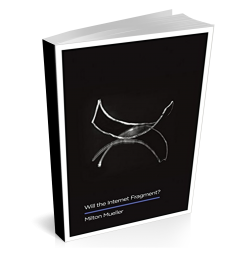The new agreement, called a Joint Project Agreement (JPA) is a cosmetic response to the comments received by NTIA during its Notice of Inquiry in July 2006. Public responses expressed widespread support for a DNS governance regime that was free of dominance by one government and indeed, any government. At the same time, various interest groups for many different reasons asked for a more accountable and representative ICANN and often expressed reservations about freeing ICANN from governmental oversight until suitable reforms in its processes and accountability were made.
The US and ICANN have responded to these concerns by dressing up their MoU relationship in new clothes. The object seems to be to strengthen the public's perception that ICANN is relatively independent. But the basic relationship between the USG and ICANN is fundamentally unchanged. ICANN still gets general policy guidance from the DoC, and still regularly reports to it. The new agreement lasts for three years, just like the old one. Considered in combination with the IANA contract, which ultimately controls any modification of the DNS root and which is still controlled entirely by the USA, the new agreement does not substantially reduce the level of US government control over ICANN and Internet identifiers.
In one important respect, the JPA has actually increased direct US intervention. If the new agreement was a movie, it might be seen as the sequel to the .xxx domain veto exercised by the U.S. Commerce Department last year. One of the most important issues ICANN is considering at the moment is the relationship between domain name registration data (the Whois service) and individual privacy rights. The new agreement orders ICANN to “enforce existing Whois policy” which requires that ICANN maintain “timely, unrestricted and public access to accurate and complete Whois information.” It even specifies four distinct parties contact information.
This provision codifies a US govt policy preference in ICANN's agreement and disregards the results of an ongoing bottom up policy process. One ICANN Board member, Susan Crawford, has stated, “I was deeply concerned about the agreement's apparent wholesale ratification of the DOC's desire to retain the current WHOIS policy. It would be completely inappropriate to bind ourselves contractually to that policy in advance in order to satisfy the USG…” Ms. Crawford goes on to say “I have been assured, again and again, that ICANN's own current PDP processes are not undermined by this agreement, and that should a changed WHOIS policy be adopted by the Board it can be enforced without the DOC's agreement.”
Crawford's statement is mildly reassuring, but does not eliminate the deep concerns the Whois provision raises about ICANN's independence. If ICANN is free to alter its Whois policy in a way that the USG doesn't like, why is this provision in the new agreement at all? Why doesn't the language explicitly note that the policy can change? Recall that in vetoing the .xxx domain, the US did not have to actually refuse to alter the zone file in a way proposed by ICANN, nor did it have to explicitly order the corporation to adopt a certain policy. It simply made its preference known, and used various forms of GAC and behind-the scenes pressure to kill the decision ICANN made. In the Whois case, we have an even clearer signal, and indeed, we have language that on its face could be interpreted to bind ICANN to a specific policy. But it is good that Crawford has openly challenged this.
In general, the new JPA increases the cynicism and Orwellian misuse of words that has characterized ICANN from the beginning. (Remember the “we don't do policy” line?) Even as the agreement's Whois provision threatens ICANN's multistakeholder, bottom-up policy process, the new JPA explicitly praises the “multi-stakeholder model” and repeatedly refers to ICANN's “bottom up” policy development process. In essence, private and civil society stakeholders are invited to invest thousands of hours of their time and money in making policy, but the new MoU makes it clear that if they develop a policy the US government doesn't like, the chances are very good that their activities will be short-circuited or overturned. If there is to be an accountable, popularly utilized ICANN policy making process, this kind of cynicism is incompatible with it.
ICANN has claimed that the JPA is “less prescriptive” than the old MoU because it contains no specific milestones. Yes, the new agreement is a bit different in that respect, but there is less to that difference than it seems. Almost none of the specific milestones in the old agreements were met. The date-specific deadlines inserted into the old MoU were thus practically meaningless. (For example, the old MoU required ICANN to implement a new TLD addition process by a specific date; it still has not done so.) So the new agreement ends up doing pretty much what the old one did: provide general policy guidance based on the White Paper principles while maintaining a close supervisory relationship to the U.S. DoC. Another point to keep in mind: a prescriptive MoU implies that if the tasks were performed, the MoU would end and the “transition” would be “completed.” An open-ended, generalized JPA could mean that the relationship never ends.
There are also some interesting changes of emphasis and possibly important changes of approach in the JPA's treatment of root server management. These aspects of the new JPA require careful analysis and will be discussed in the IGP-sponsored workshop at the upcoming Athens Internet Governance Forum.
